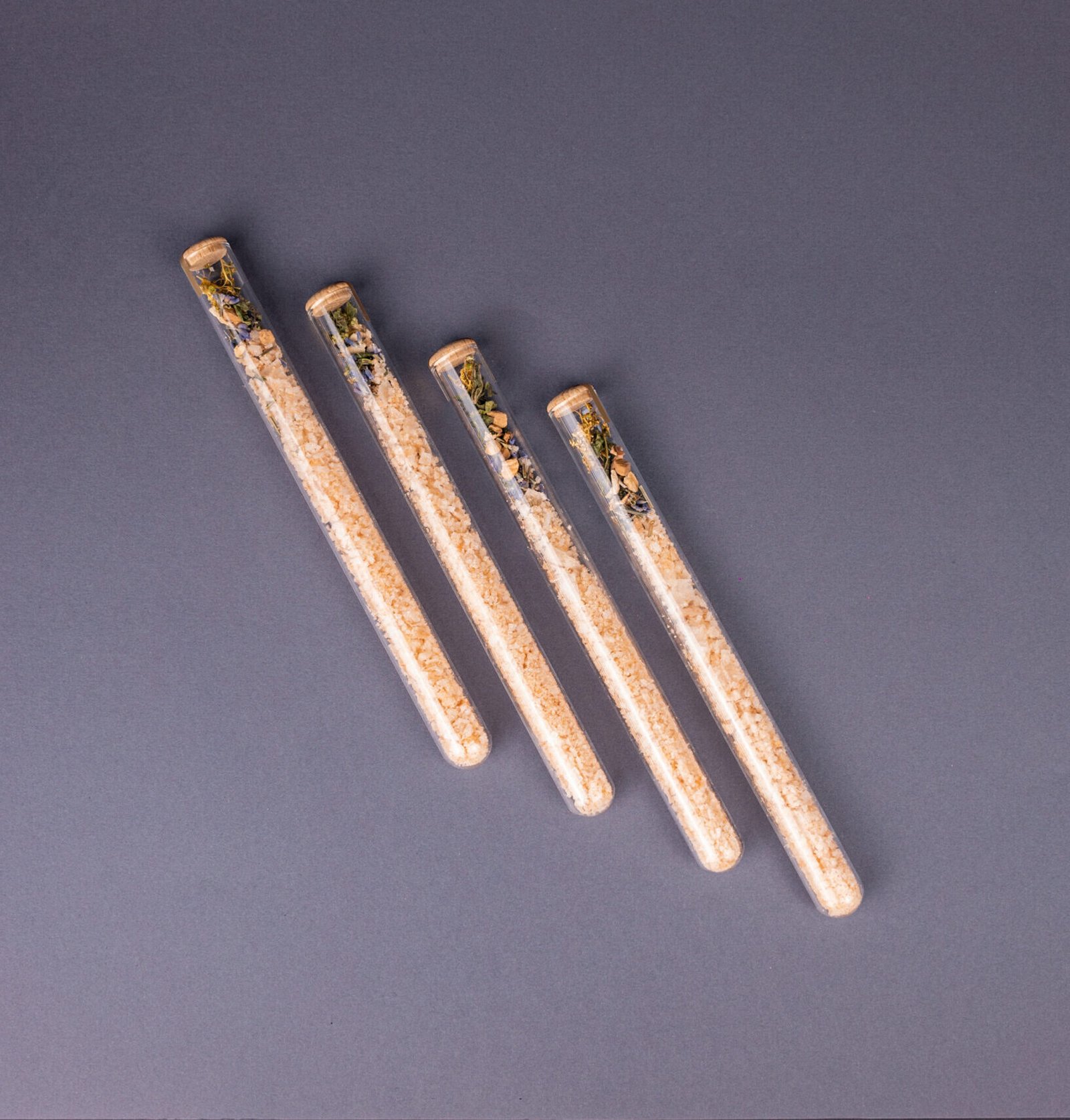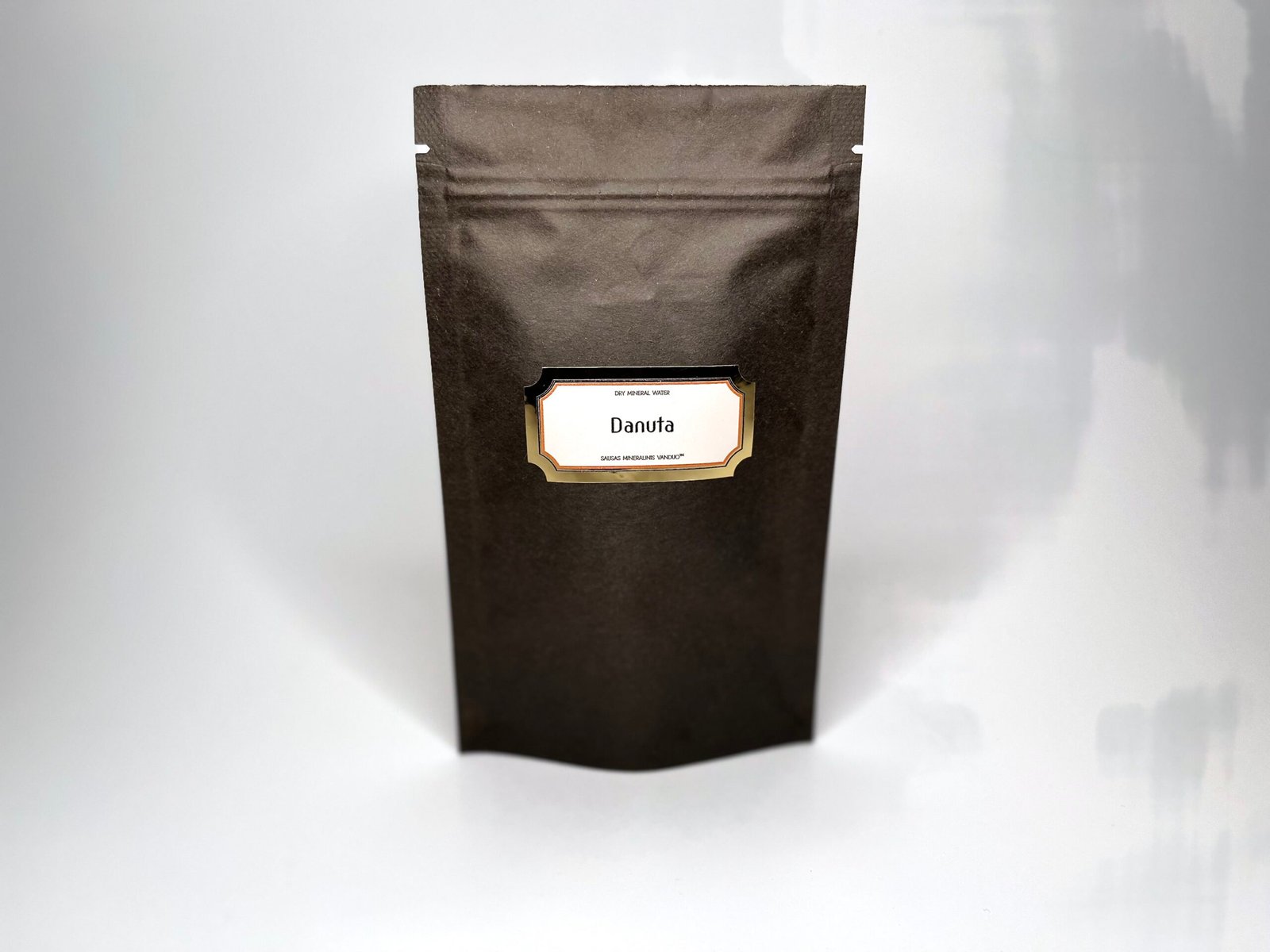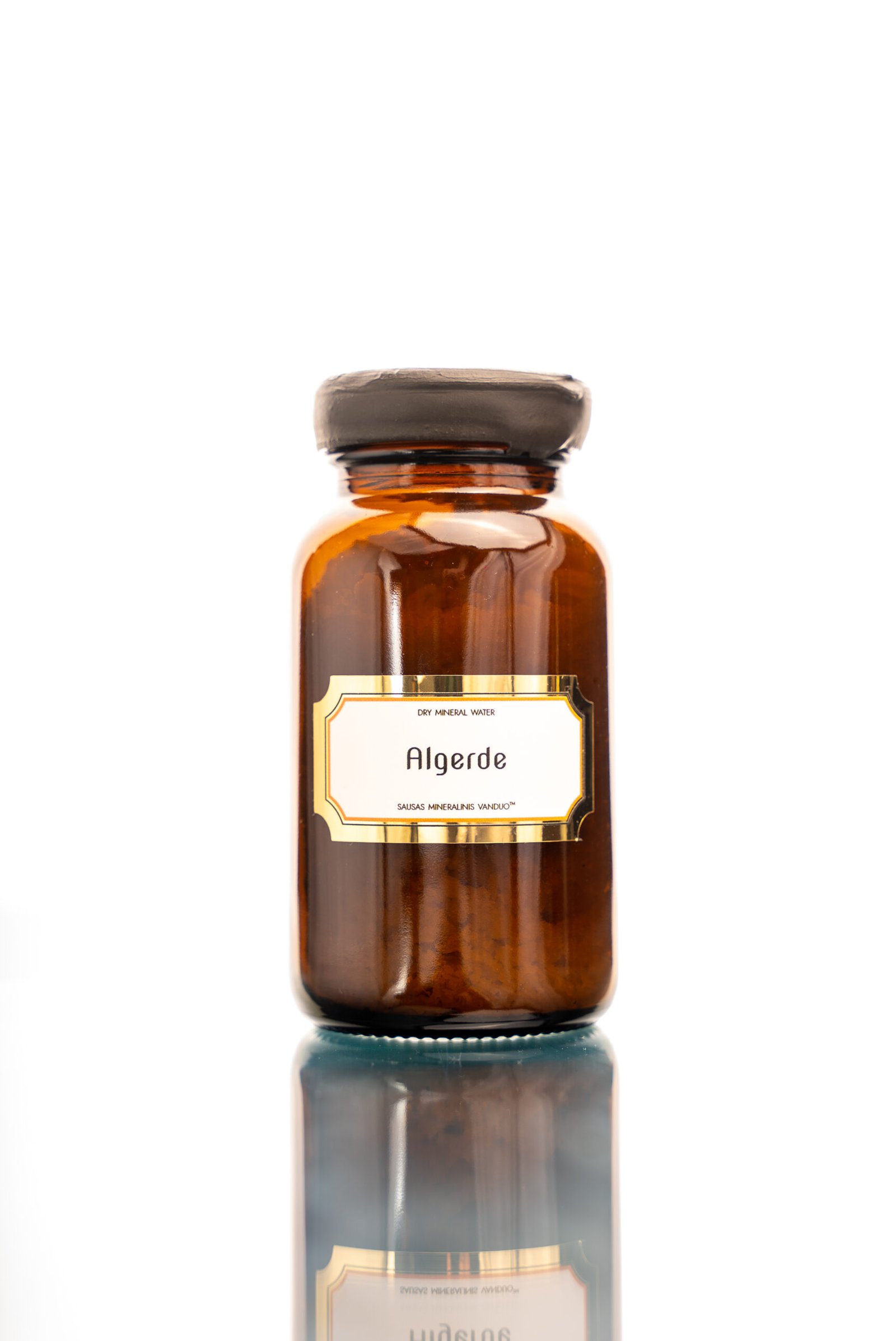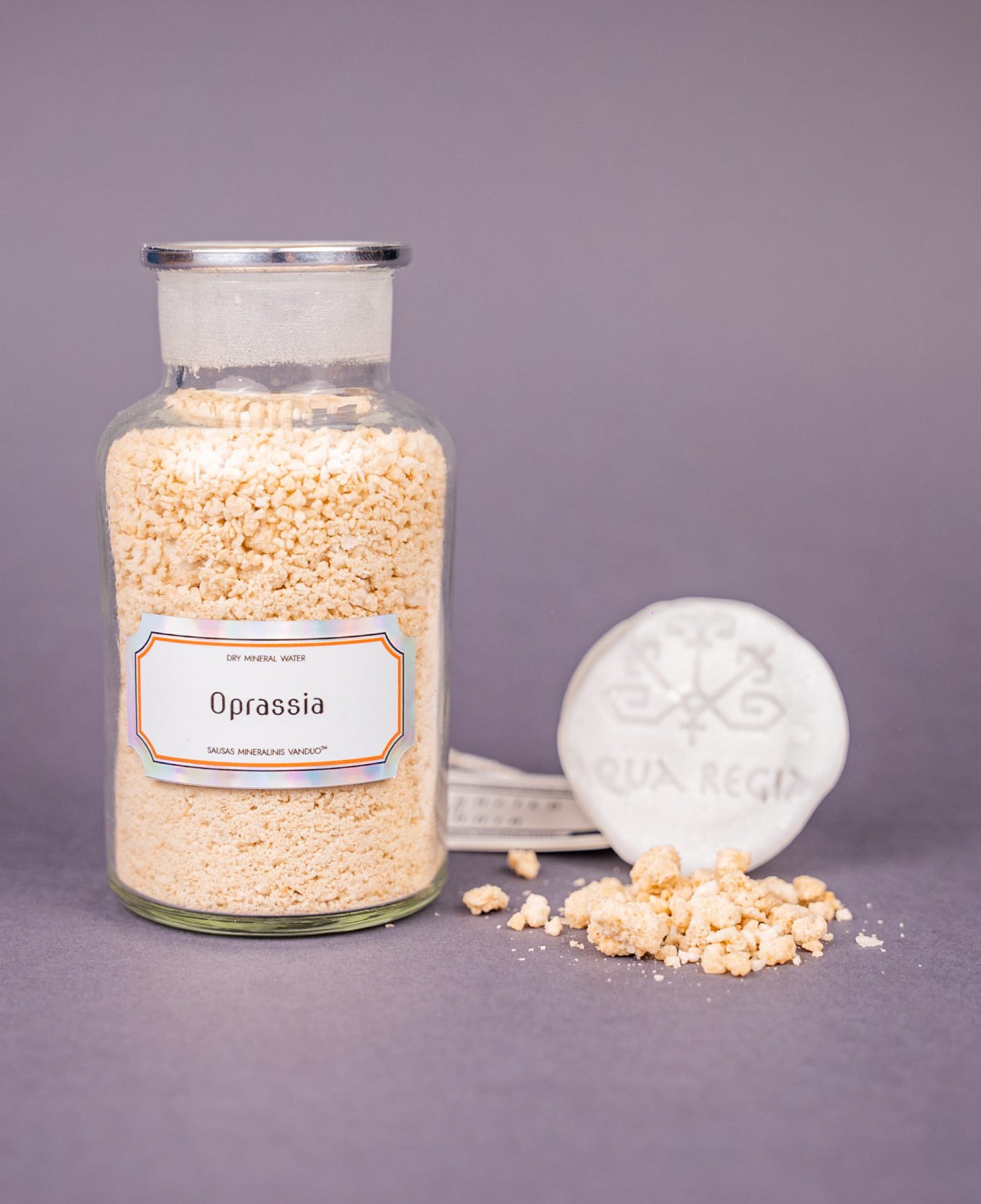The Quadruplet Aromatherapy Bath is an extremely powerful aromatherapy treatment where essential oils are inhaled through the respiratory tract, along with salt ions, and absorbed through the skin's hair follicles and sweat glands. The glass tubes with natural oak stoppers in the set are designed for four aromatherapy baths. They are also ideal for topical hand or foot baths.
The three-leaved lakis is an annual herbaceous plant that grows from 20 cm to 70 cm tall. The plant is found throughout Lithuania, growing in wet areas such as river and lake shores, and dry marshes. The trifoliate lakis accumulates flavonoids (quercetin, luteolin, butein, rutin, cinaroside, etc.), phenolic acids (caffeic, chlorogenic, protocatechu, etc.), carotenoids, essential oil (eugenol, ocimene, cosmene, etc.), and other essential oils. ), coumarins (aesculin, scopoletin, umbelliferone), mucilage, yeasts, carbohydrates (arabinose, galactose, glucose, rhamnose, xylose), small amounts of vitamin C, trace elements (manganese, etc).
Add the contents of one tube to a warm bath (38°C) and enjoy the thyme and sage-scented bath for about 15 to 20 minutes, until the active ingredients have done their job. For a stronger effect, add two tubes (depending on the amount of water in the bath). If you don't like herbs floating in the bath, simply dissolve the contents of the tube in a bowl of hot water and let the herbs saturate the water. After 5 to 10 minutes, drain the infusion into the bath. In the bath, meditate, sing, read, listen to music - any calming activity will do. Drink water before, during and after the bath. When you get out of the bath, dry your skin thoroughly and wrap yourself in a flannel towel...you will feel better. Ideal for use before bedtime. Suitable for all skin types. Avoid contact with eyes or respiratory tract. Keep dry and out of direct sunlight and out of the reach of children.
Ideal for hand or foot baths, for swollen hands or feet, and for freezing extremities.
MINERAL SALTS (FROM THE BIRŠTONAS UNDERGROUND BRINE POOL), ORGANIC LAKISCH GRASS, THYME ESSENTIAL OIL, SAGE ESSENTIAL OIL, BIOLOGICALLY ACTIVE SUBSTANCES EXTRACTED FROM ESSENTIAL OILS, RARELY, BUT POTENTIALLY ALLERGENIC: LINALOOL, LIMONENE.
INCI: MINERAL SALTS, THYMUS VULGARIS FLOWER/LEAF OIL, SALVIA OFFICINALIS LEAF OIL, LINALOOL, LIMONENE.
The ancient Baltic name "kupolė" is associated with several meanings of the word: Kupolė could have been a mythical creature or goddess; kupoliavimas - the gathering of flowers, and herbs. Herbs were usually gathered only after they had begun to flower. They were not gathered before flowering because then they would have no healing effect. It was customary throughout Lithuania to collect herbs no later than St. St John's Day (24 June). Sometimes an earlier time is mentioned: 'Medicinal herbs are usually gathered on the tenth day of May before they have blossomed and set seed'. Herbs were collected before Midsummer, as 'those collected after that date are of no value for healing'. This date was often associated with witchcraft: it was believed that herbs lost their healing powers after 24 June, as 'the varažbitniki begin to wilt'. It is often said that 24 June is the best day to collect herbs, as 'the herbs are the most pure' and various herbs 'have the greatest power'. Depending on the illness being treated, the herbs were prepared differently for use. Baths were prepared by adding herbs, usually by pouring decoctions into the bath water.





